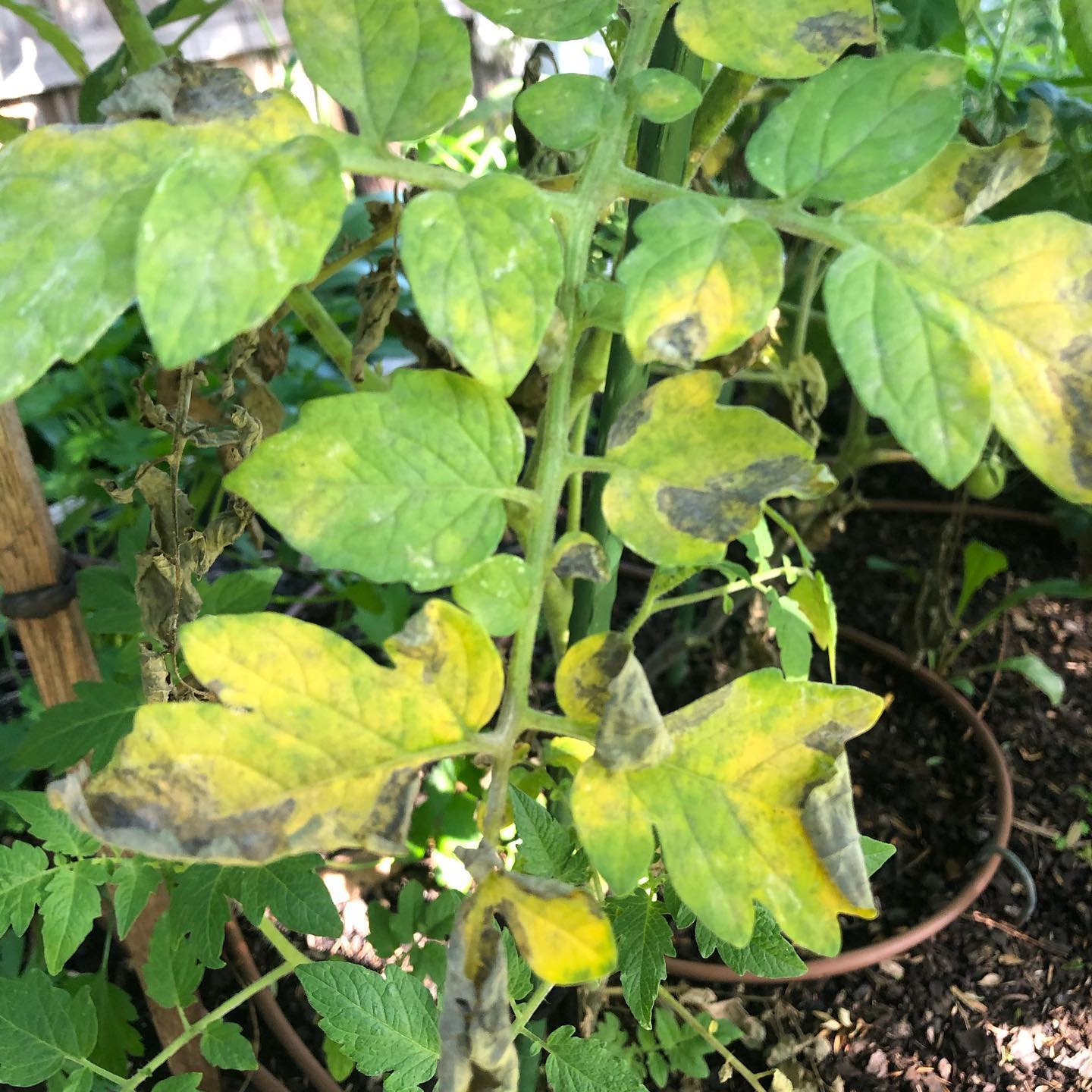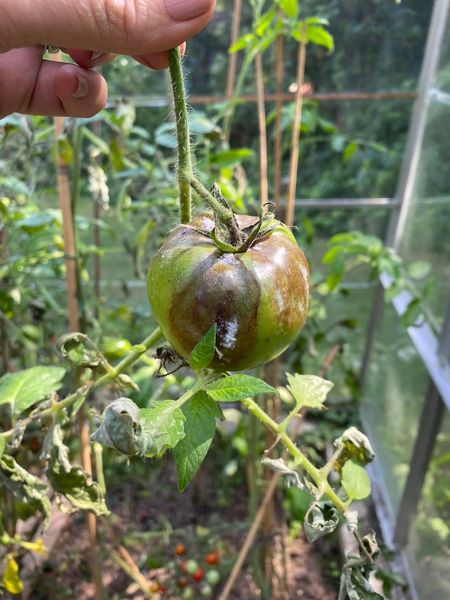
This article will equip you with the knowledge to identify the different types of blight, understand their causes, and most importantly, equip you with the tools to save your harvest. So, grab your metaphorical magnifying glass and gardening gloves, because we’re about to delve into the world of tomato blight.
The Culprits Behind the Blight: A Rogues’ Gallery of Fungal Foes
There are two main culprits when it comes to tomato blight: early blight and late blight. While they share the unpleasant consequence of a blighted tomato plant, they have distinct characteristics and require slightly different approaches.
Early Blight: The Target-Loving Terror

Early blight, caused by the fungus Alternaria solani, is like a methodical villain. It starts small, with dark brown spots appearing on the lower leaves of your tomato plant. These spots then develop concentric rings, giving them a distinctive target-like appearance. As the disease progresses, the infected leaves turn yellow and eventually brown, before dropping off completely. While early blight primarily affects the foliage, severe cases can cause blotches on the fruit itself.
Late Blight: The Rapid Ravager

Late blight, caused by the oomycete Phytophthora infestans, is a more aggressive foe. It thrives in cool, wet weather and can devastate entire crops in a matter of days. Unlike early blight, late blight can appear anywhere on the plant, but it often starts on the upper leaves and stems. The initial symptoms are watery spots that turn brown and blighten quickly. A white, fuzzy mold may also be visible on the undersides of the leaves in humid conditions. Late blight doesn’t discriminate – it infects both the leaves and fruits, causing them to rot and become inedible.
Unveiling the Motives: Why Does Blight Happen?
Now that we’ve identified the bad guys, let’s explore the conditions that create the perfect breeding ground for tomato blight.
- Environmental Factors: Both early and late blight flourish in humid conditions. Frequent rain, heavy dew, and poor air circulation encourage the growth of the fungal spores that cause these diseases.
- Cultural Practices: Planting tomatoes too close together, inadequate pruning to improve airflow, and overhead watering can all contribute to blight problems.
- Contaminated Soil or Plant Debris: Blight spores can survive in the soil or on leftover plant debris from previous seasons, infecting new tomato plants.
Defending Your Delicious: Strategies to Prevent and Combat Blight
The best defense is a good offense, as the saying goes. Here are some key strategies to prevent blight from taking hold in your tomato patch:
Prevention is Key:
- Choose resistant varieties: Many tomato varieties are bred to be resistant to blight. Look for varieties with the letters “VFN” (resistant to all three common tomato diseases: Verticillium wilt, Fusarium wilt, and Nematodes) or “VF” (resistant to Verticillium wilt and Fusarium wilt) on the seed packet.
- Plant strategically: Provide ample spacing between tomato plants (at least 2-3 feet) to allow for good air circulation.
- Water wisely: Avoid overhead watering, which can spread the spores. Instead, water directly at the base of the plant.
- Pruning for airflow: Regularly remove lower leaves to improve air circulation around the plants.
- Cleanliness is next to blightlessness: After harvest, remove all plant debris from the garden and dispose of it properly. This helps to reduce the risk of overwintering spores.
Taking Action When Blight Strikes:
- Early detection is crucial: Regularly inspect your tomato plants for signs of blight. The sooner you identify the problem, the easier it is to control.
- Isolation and removal: If you find blight-infected leaves or fruit, remove them immediately and dispose of them in a sealed bag. Do not compost them.
- Fungicides for defense: While organic gardeners may prefer preventative measures, a fungicide specifically labeled for tomato blight can be helpful in severe cases.
- Cultural adjustments: If blight appears, adjust your watering practices and improve air circulation around the plants.
